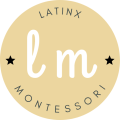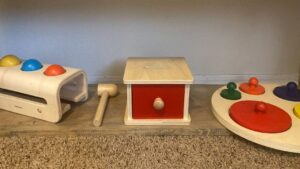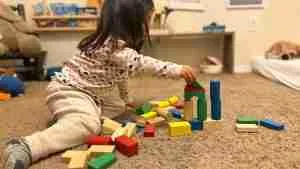
Practical Guide To The Montessori Method At Home
Montessori at home strategies to implement and mistakes to avoid
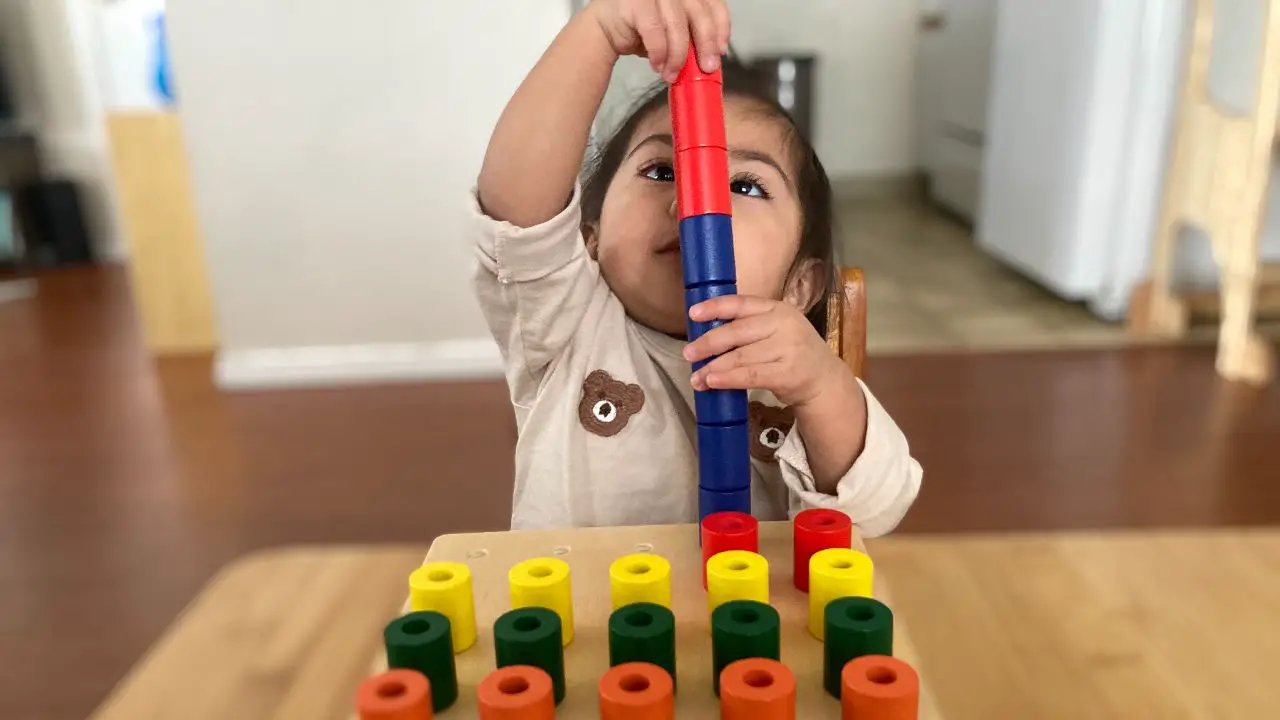
*Disclosure: I only recommend products I would use myself and all opinions expressed here are our own. This post may contain affiliate links that at no additional cost to you, I may earn a small commission. Thank you for your support!
Share this post
What is the Montessori method at home? What is the best way to implement the Montessori method at home? Is the Montessori method effective? These are common questions I get asked often. The truth is that there is no secret way to practice the Montessori method at home because every family is different.
What works for some families may not work for others. When implementing the Montessori method at home, you need to follow the child. And since every child develops at their own pace, it is important that you observe your child and prepare your child’s environment according to their developmental need.
In this practical guide to the Montessori method at home, I will share five strategies on how to apply the Montessori method at home. I will also give you five common mistakes you should avoid so you can help your child thrive.
In this post, you will learn:
- How to apply the Montessori method at home
- How to setup a Montessori home
- 5 strategies to successfully implement the Montessori method at home
- 5 mistakes to avoid when you set up a Montessori home
I am so excited to share this information with you, so let’s get started!
How to apply the Montessori method at home
A good Montessori at home set up requires a good understanding of the prepared environment. The prepared environment is a key aspect of the Montessori method, and it’s just as important at home as it is in a Montessori school.
Creating a prepared environment at home involves setting up a space that is organized, visually appealing, and designed to facilitate your child’s learning and exploration.
To create a prepared environment at home, start by selecting a space that is beneficial to learning and exploration. This might be a dedicated playroom, a corner of your living room, or even a portion of your child’s bedroom.
How to setup Montessori at home
The correct Montessori at home set up takes into account the layout and design of the space. Montessori environments typically feature child-sized furniture, low shelves, and open spaces that allow children to move around freely.
Once you have a general Montessori layout in mind, it’s time to start selecting materials and activities that will fill the space. Montessori materials should be carefully chosen to reflect your child’s interests and developmental needs.
Ideas for a Montessori at home set up can be including books about animals if your child is interested in nature. Remember that in order to correctly implement the Montessori method at home, you need to focus on the needs and interests of your child.
Here is a quick tip when applying the Montessori method at home environment: regularly evaluate and adjust the environment as your child grows and develops. This might mean adding new Montessori materials or changing the layout of your Montessori home to better suit your child’s needs.
By creating a prepared environment at home, you can help foster your child’s independence and self-directed learning, while also providing a safe and engaging space for exploration and discovery.
I will share more strategies later in this practical guide to the Montessori method at home
Can I teach my child Montessori at home?
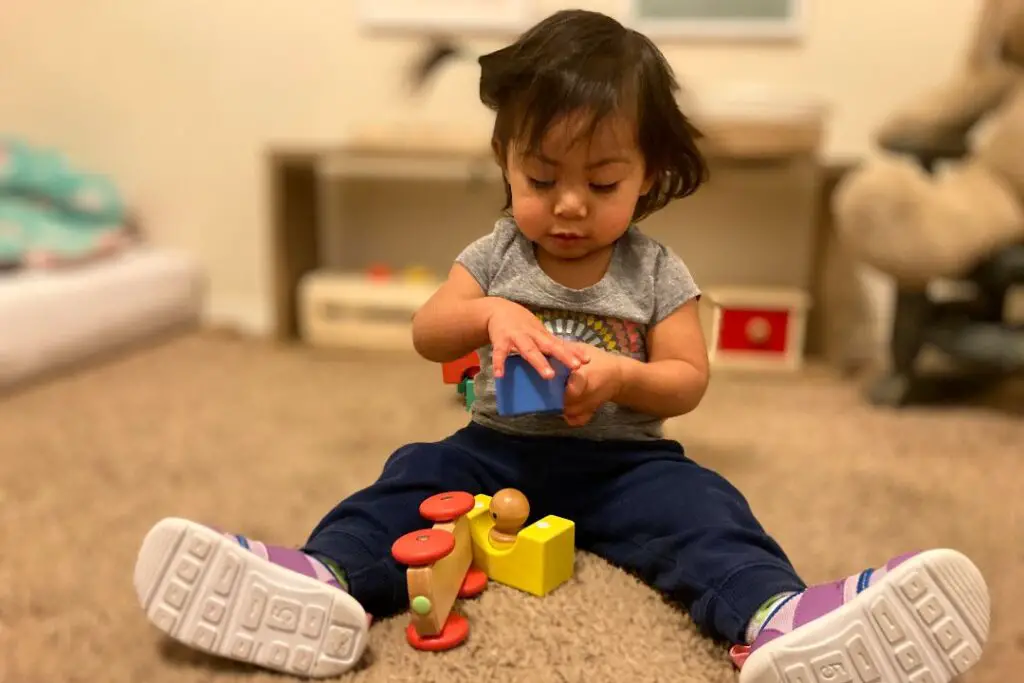
The Montessori method is not just for schools; it can be applied at home as well. While it’s true that Montessori education is typically associated with schools, you too can successfully implement the Montessori method at home.
One of the key advantages of Montessori learning methods at home is that it allows you to tailor the learning environment to your child’s unique needs and interests. You can create your own Montessori routine at home or even design a great Montessori at home program.
Other benefits of the Montessori at home include creating a flexible schedule that works for your family, which can be especially helpful if you are a full-time working parent or have multiple children. Or selecting Montessori home items to supplement your child’s education.
Of course, Montessori at home education requires a certain level of commitment and dedication. You’ll need to invest time and effort into creating the right Montessori environment, selecting appropriate Montessori materials, and guiding your child through various Montessori activities.
Many parents like myself find that the benefits of Montessori education make it well worth the effort.
How to apply the Montessori method at home
If you’re ready to start applying the Montessori method at home, there are a few practical steps you can take to get started.
The first step is to create a prepared environment that is designed to facilitate your child’s learning and exploration. This might involve setting up various activity areas around your home, such as a reading corner or an art table.
Once you have a prepared environment, you’ll need to select appropriate Montessori materials and activities that are in line with the Montessori principles of independence and self-directed learning. This might include items like puzzles, building blocks, or educational games.
Another key aspect of Montessori at home is fostering your child’s independence. This means allowing your child to take ownership of their learning and allowing them to engage in activities independently, with minimal guidance or intervention from you.
Remember to provide guidance and support as needed, but the goal is to encourage your child to develop their own skills and abilities through self-directed exploration and experimentation.
5 strategies to successfully implement the Montessori method at home
Below are some of the most basic Montessori at home tips you can start implementing today. Follow these easy tips to successfully implement the Montessori method at home.
1. Keep Montessori materials and toys at eye level
One of the key principles of the Montessori method at home is that your child should be able to access materials and toys independently.
In order to have the right Montessori at home setup, it’s important to keep Montessori materials and toys at eye level for your child. This means placing them on low shelves or in baskets that are within easy reach.
By keeping materials and toys at eye level, you allow your child to explore and learn independently, without needing to ask for help or assistance. This fosters a sense of independence and self-confidence, which are important skills for children to develop.
2. Emphasize life skills
The Montessori method emphasizes practical life skills, such as dressing, cleaning, and cooking. These skills are not only important for daily life, but also help children develop fine motor skills and hand-eye coordination.
To incorporate Montessori practical life skills into your child’s daily routine, consider involving them in household tasks, such as setting the table or folding laundry.
You can also provide child-sized tools and utensils, such as a child-sized broom or cooking utensils, to make it easier for your child to participate in these activities.
3. Allow for freedom of movement
Another key principle of the Montessori method is allowing for freedom of movement. This means providing a safe and open space for your child to move around and explore, without feeling confined or restricted.
To facilitate freedom of movement, consider removing any unnecessary furniture or obstacles that might impede your child’s movement. You may also want to provide opportunities for your child to engage in physical activity, such as climbing, jumping, or crawling.
4. Rotate Montessori materials and toys
It’s important to regularly rotate Montessori materials and toys to keep your child engaged and interested. This can also help reinforce learning and development in specific areas, such as language or math.
Rotating Montessori materials and toys is almost effortless. Simply swap out items on a regular basis, such as weekly or monthly. You can also keep a list of materials and activities that your child has enjoyed in the past, to refer back to when selecting new items.
5. Observe your child
This practical guide to the Montessori method at home cannot be complete without observing your child. By observing your child’s interests, behaviors, and abilities, you can tailor the learning environment to better suit their needs.
To observe your child, simply take the time to watch and listen to them as they play and explore. This can provide valuable insight into their preferences and abilities, which can inform your selection of Montessori materials and activities.
By following these Montessori at home tips and strategies, you can apply the Montessori method at home and create a nurturing and engaging learning environment for your child.
5 mistakes to avoid when you set up a Montessori home
Can you teach Montessori at home to your child? Of course, as long as you avoid these crucial mistakes.
1. Interrupting your child as they work
One of the biggest mistakes you can make when implementing the Montessori method at home is interrupting your child as they work.
It’s important to allow your child to work independently and complete tasks at their own pace. Interrupting your child can disrupt their concentration and prevent them from fully engaging in the task at hand.
To avoid interrupting your child, try to create a quiet and calm Montessori environment for them to work in. You can also establish clear expectations and boundaries around when and how your child should be approached while they work.
2. Not letting your child help
Here is a quick Montessori at home tip: allow your child to help! If you follow me on Instagram, you can see how we Montessori at home by involving our child in daily activities.
A big mistake you can make is not allowing your child to help with household tasks and activities. Sweeping, mopping, cleaning, or cooking are Montessori practical life skills, and allowing your child to participate in daily activities is a key way to promote independence and self-confidence.
To encourage your child to help with household tasks, provide them with child-sized tools and utensils, and involve them in tasks such as setting the table or folding laundry.
By allowing your child to help, you not only promote their independence but also foster a sense of responsibility and pride in their accomplishments.
3. Buying every Montessori toy you see
It can be tempting to buy every Montessori toy or material you come across, but this can be a mistake. Simplicity and a focus on practical life skills should be the focus when you create a Montessori home environment, so it’s important to choose toys and materials that align with these principles.
To avoid buying too many toys and materials, focus on those that promote hands-on learning and exploration, and that can be used in multiple ways. You can also consider making your own Montessori materials using common household items.
4. Focusing on rewards, rather than intrinsic motivation
Another common mistake is focusing on rewards or praise, rather than intrinsic motivation. The Montessori method emphasizes self-directed learning and exploration, and children are encouraged to learn for the sake of learning, rather than for external rewards.
To avoid focusing too much on rewards or praise, try to provide your child with opportunities to explore and learn independently, without the expectation of a reward or praise.
You can also provide materials and activities that are intrinsically motivating, such as those that align with your child’s interests and passions.
5. Preventing your child from exploring
Preventing your child from exploring and micromanaging their activities can be a mistake. Freedom of movement allows the child to move and explore on their own.
Instead of micromanaging your child’s activities, create a safe and open environment for them to move around and explore, without feeling confined or restricted. You can also observe your child and follow their lead and provide materials that align with their interests.
Montessori method at home FAQs
How can I do Montessori at home?
Implementing the Montessori method at home can be a rewarding experience for both parents and children. To do Montessori at home, it’s important to create a prepared environment that promotes independence and self-directed learning.
This can involve setting up child-sized furniture and materials, providing opportunities for practical life skills, and allowing for freedom of movement and exploration.
In addition to creating a prepared environment, you can also follow the child’s lead and observe their interests and abilities, providing materials and activities that align with these areas.
What is the best age to start Montessori?
The Montessori method can be adapted for children of various ages, but the optimal age to start varies depending on the child’s individual development and needs. Generally, Montessori schools and programs cater to children from infancy to age 18, with a focus on early childhood education.
For younger children, the Montessori method emphasizes practical life skills, sensorial exploration, and the development of fine motor skills.
As children grow older, the Montessori method shifts towards academic and intellectual development, while still emphasizing self-directed learning and independence.
What age is too late to start Montessori?
There is no age that is too late to start the Montessori method. The principles of the Montessori method can be applied to children of all ages, and even adults can benefit from the emphasis on self-directed learning and hands-on exploration.
It’s important to keep in mind that the Montessori method is most effective when it’s implemented consistently and over a period of time. It can be more challenging to adapt to the Montessori method at a later age, but it’s still possible to incorporate Montessori principles and practices into daily life.
What are the disadvantages of the Montessori method at home?
While the Montessori method can be highly effective, there are also some potential disadvantages to implementing the Montessori method at home.
One potential disadvantage is the cost associated with Montessori materials and equipment, which can be prohibitive for some families.
Another potential disadvantage is the time and effort required to set up a prepared environment that meets the needs of the child. Parents may also struggle with finding a balance between providing opportunities for self-directed learning and providing guidance and structure.
Final thoughts on implementing the Montessori method at home
For many parents, bringing the Montessori philosophy to your home may be daunting and confusing. The truth is that the Montessori method at home is simple to apply when you understand how to set up a Montessori environment to support your child’s development.
I truly hope you found this article helpful. If you ever want more tips and strategies, or just need to stay motivated with Montessori at home, visit my Instagram page and YouTube channel where I share more information so you can be successful with Montessori at home.

Hello, I am Leslie. I am on a mission to help you support the growth and development of your child. With the right tools and proper guidance, you can navigate parenthood with confidence and assertion! My goal is to equip you with knowledge to help you construct a strong foundation for your child’s life.
Suggested articles
You May Also Like
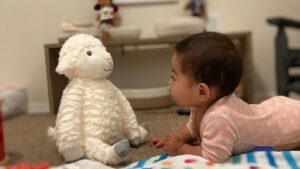
Simple Tips On How To Create A Montessori Room
A Montessori room is a type of educational environment for young children that emphasizes hands-on learning and exploration. It is designed to support the child’s natural development and encourage independence, creativity, and self-discovery.

Object Permanence In Psychology: Why Is It Important?
Understanding object permanence in psychology helps children to navigate the world around them and to develop a sense of trust and security in their relationships with others.

5 Developmental Benefits Of Black And White Cards For Infants
Black and white cards for infants stimulate the development of you newborn’s optic nerves. Black and white care are easy for infants to focus on.
